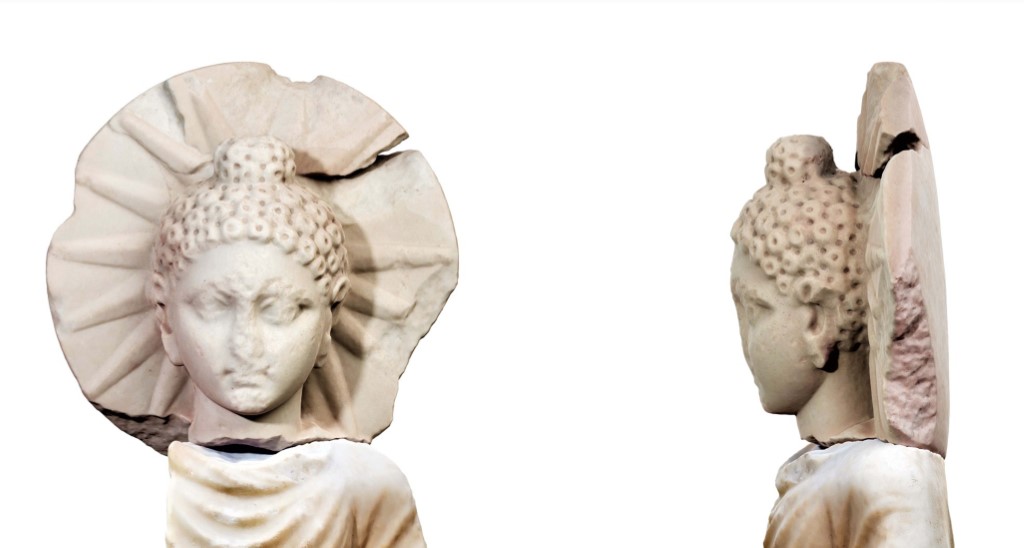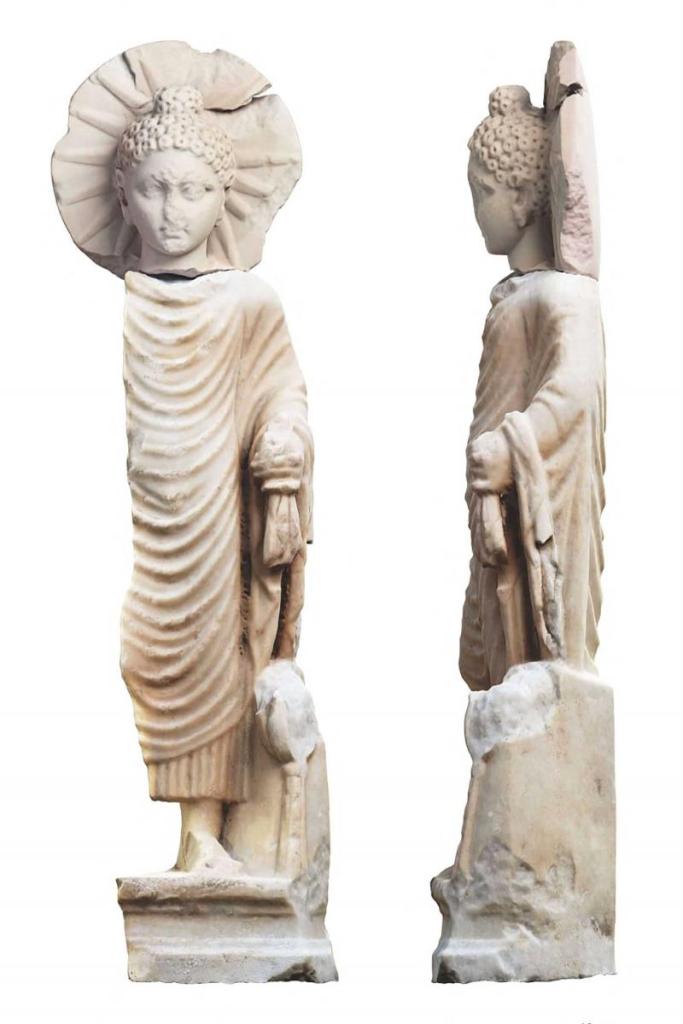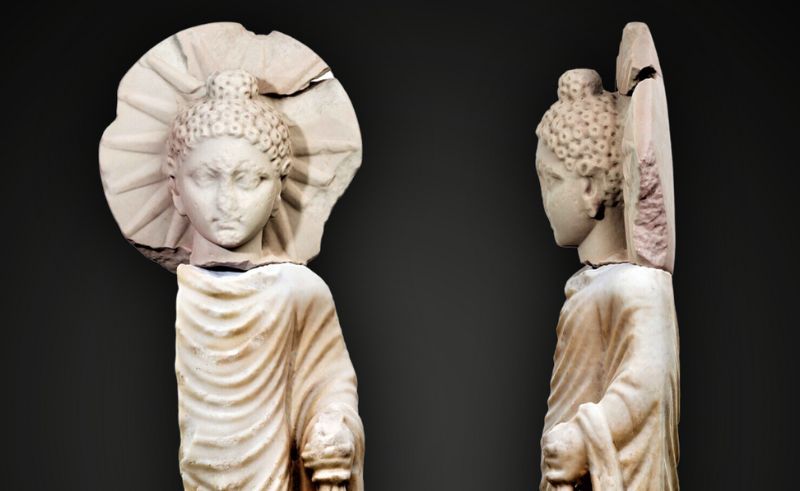In the heart of Egypt, amidst the majestic pyramids and ancient temples, lies a hidden gem that tells a tale of cultural fusion and spiritual enlightenment. This revelation has shed new light on the interconnectedness of ancient civilizations and the profound impact they had on one another. The story begins in the city of Berenice Troglodytica, where the teachings of Buddha found their way into the land of the pharaohs.
Berenice Troglodytica, also known as Berenike, Berenice, or Bereniche, was an ancient seaport located on the coast of the Red Sea. Founded in the third century BCE, it became one of the largest ports in Roman-controlled Egypt. Serving as a crucial waypoint for trade between India, Sri Lanka, Arabia, and Upper Egypt during the Roman Era, it facilitated the exchange of goods like pepper, semi-precious stones, cloth, and ivory.
One of Berenice’s most significant landmarks is the Temple of Isis, dedicated to the Egyptian goddess of magic and fertility. This temple was a centre of worship and pilgrimage for both Egyptians and foreigners alike.
The trade route through Berenice, known as the “Silk Road,” played a vital role in exchanging goods, culture, and ideas between India and the Mediterranean world. Egyptian archaeologists excavating the main early Roman period temple dedicated to the Goddess Isis in Berenice made a remarkable discovery—a marble statue of the Buddha.
This 71-centimetre statue, crafted from Mediterranean marble, depicts Buddha standing next to a lotus flower, with a halo of sun rays around his head, symbolizing his radiant mind. It is believed to have been sculpted in Berenice between the end of the first century and the first half of the second century CE, commissioned for a Buddhist trader and placed in the local Isis Temple.
The discovery of this statue sheds new light on the human and commercial links between Roman Egypt and India. As a temple-sharing god, the Buddha would have been worshipped alongside Egyptian and Greek gods, including Alexander and the deified Ptolemies, in the same Isis Temple.
Siddhartha Gautama, known as the Buddha, was a spiritual leader and founder of Buddhism who lived in ancient India. Renouncing his luxurious life, he sought enlightenment through meditation and spiritual practices, eventually becoming known as “the awakened one.”

The 71-centimetre statue shows Buddha standing next to a lotus flower, holding his clothing with the left hand and with a halo of sun rays around his head, in allusion to his radiant mind. The archaeologists who discovered it indicate that the figure is made of Mediterranean marble, probably extracted from a region in the south of present-day Istanbul, Turkey.
They believe that the statue was sculpted in Berenice between the end of the first century and the first half of the second century CE, commissioned for a Buddhist trader and placed in the local Isis Temple. As a temple-sharing god, the Buddha would be worshipped in the same Isis Temple as many Egyptian and Greek gods including Alexander and the deified Ptolemies.
Siddhartha Buddha was a spiritual leader and founder of Buddhism who lived in ancient India. He was born as a prince and later renounced his luxurious life to seek enlightenment. After years of meditation and spiritual practices, he attained enlightenment and became known as the Buddha, meaning “the awakened one.”
The presence of a Buddha statue at the Temple of Isis in Berenice is a testament to the cultural and religious exchange that occurred along the ancient Silk Road. It is believed that Buddhist merchants and travellers brought their faith and artistic traditions to the region, resulting in the creation of unique syncretic artworks like the Buddha statue at the Temple of Isis. Isis is an ancient Egyptian goddess who was worshipped as the ideal mother and wife, as well as the patroness of nature and magic.

In addition to the Buddha statue, archaeologists discovered a Sanskrit inscription dating from the reign of the Roman emperor Marcus Julius Philippus (r. 244-249 CE), also known as Philip the Arab. However, the inscription would be from a different period than the statue, which would be much older. Other inscriptions found in the temple were written in Greek and date to the early first century.
The team also found two second-century coins from the kingdom of Satavahana (1st century BCE – 3rd century CE) an ancient Indian dynasty based in the Deccan region. There is also archaeological and textual evidence of Indians living in Berenice and spice imports from India.
It was during this time that Buddhism started to spread its wings beyond the borders of India. Traders from the East brought with them not only exotic goods but also the teachings of Buddha. The peaceful philosophy and spiritual practices resonated with the people of Berenice, who were already familiar with the mystical traditions of ancient Egypt. Berenice became a melting pot of cultures, where people from different backgrounds came together to seek wisdom and enlightenment.
The teachings of Buddha found their way into the hearts of many Egyptians, who embraced the principles of compassion, mindfulness, and non-violence. Buddhist monks and scholars travelled to Berenice to share their wisdom and engage in philosophical debates with local priests and scholars. The exchange of ideas and knowledge enriched both traditions, creating a unique blend of spirituality that was truly one-of-a-kind.
But as time went by, Berenice slowly faded into obscurity. The rise of Christianity and the decline of the Roman Empire led to a shift in power dynamics, and the city lost its prominence as a trade hub. The once-thriving community dispersed, leaving behind only remnants of its glorious past.
Today, Berenice stands as a testament to the rich tapestry of human history. Its ruins serve as a reminder of a time when different cultures coexisted and thrived, embracing diversity and celebrating their shared values.
Berenice may have been forgotten by time, but its legacy lives on in the hearts and minds of those who seek wisdom and unity in a world that often seems divided. The presence of the Buddha statue in Berenice highlights the rich tapestry of cultural exchange that characterized ancient civilizations and emphasizes the interconnectedness of human history across vast distances and time periods. It serves as a reminder that even in antiquity, ideas and beliefs transcended geographical boundaries, leaving a lasting legacy that continues to resonate to this day.
Image Credit: Egyptian Ministry of Tourism and Antiquities


Nice info. If properly excavated and researched, we can find many such instances of a mixture of cultures and acceptance of different faiths, thoughts, and cultures all over the world in ancient history. As we got more and more civilized we have become more and more intolerant, unfortunately.
LikeLiked by 1 person
Thanks, Nilanjana. You’re right.
LikeLike
I love that this figure was actually created in or near Egypt, rather than being brought from India. As you say it serves as a reminder that even in the most unexpected places, we can find common ground and forge connections that transcend time and space, something that sadly seems to be beyond religions today.
LikeLiked by 1 person
I agree with you, Mick, that such acceptance of divergent cultures and faiths are beyond religions today. We are getting narrower in our thoughts nowadays.
LikeLiked by 1 person
Very much so, I’m afraid.
LikeLiked by 1 person
Truly, archeology and excavation shine such light on the history that has been lost in time. It is astonishing to know how the culture and religion moved through the lands so many years ago.
LikeLiked by 2 people
More interestingly deities of different faiths were worshiped in a temple and this is impossible nowadays.
LikeLike